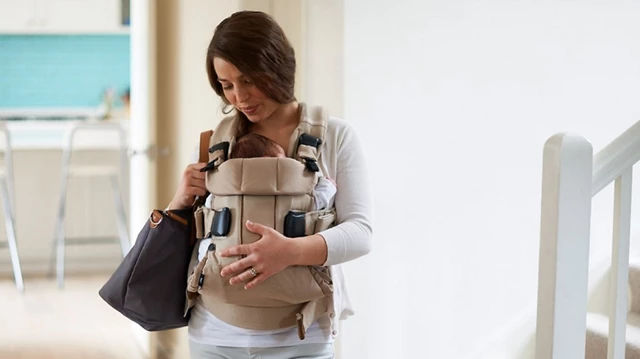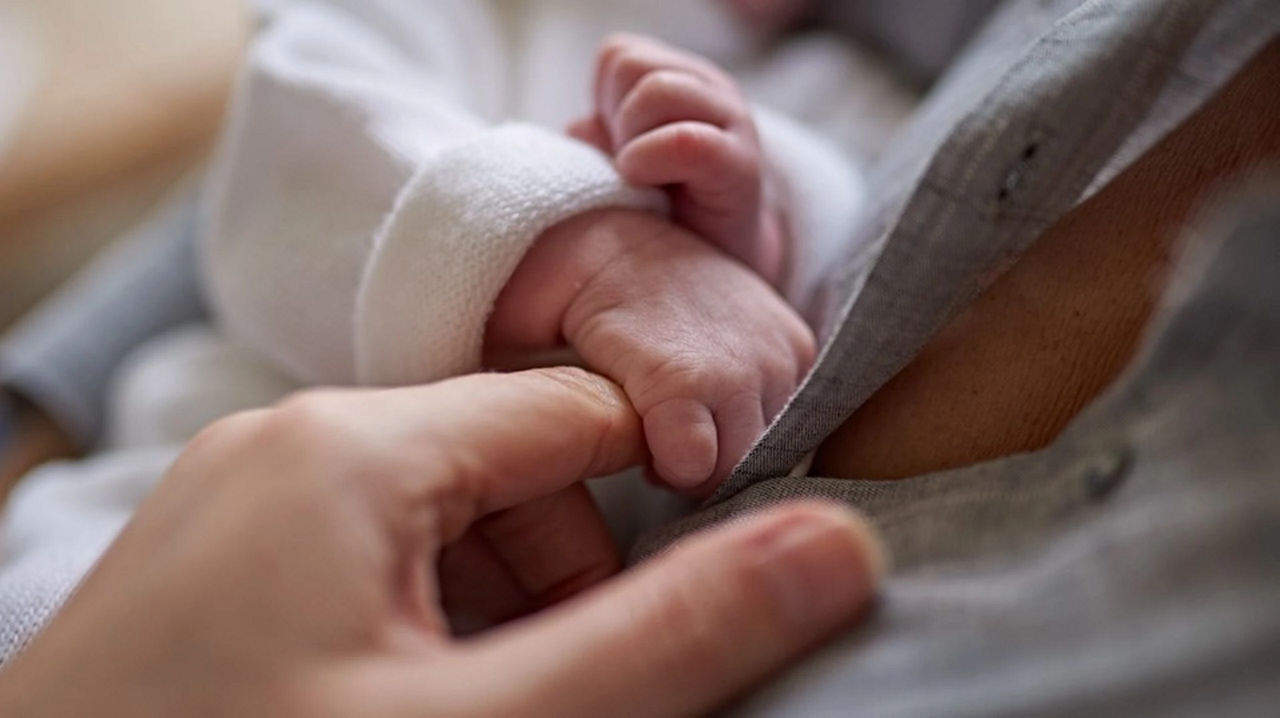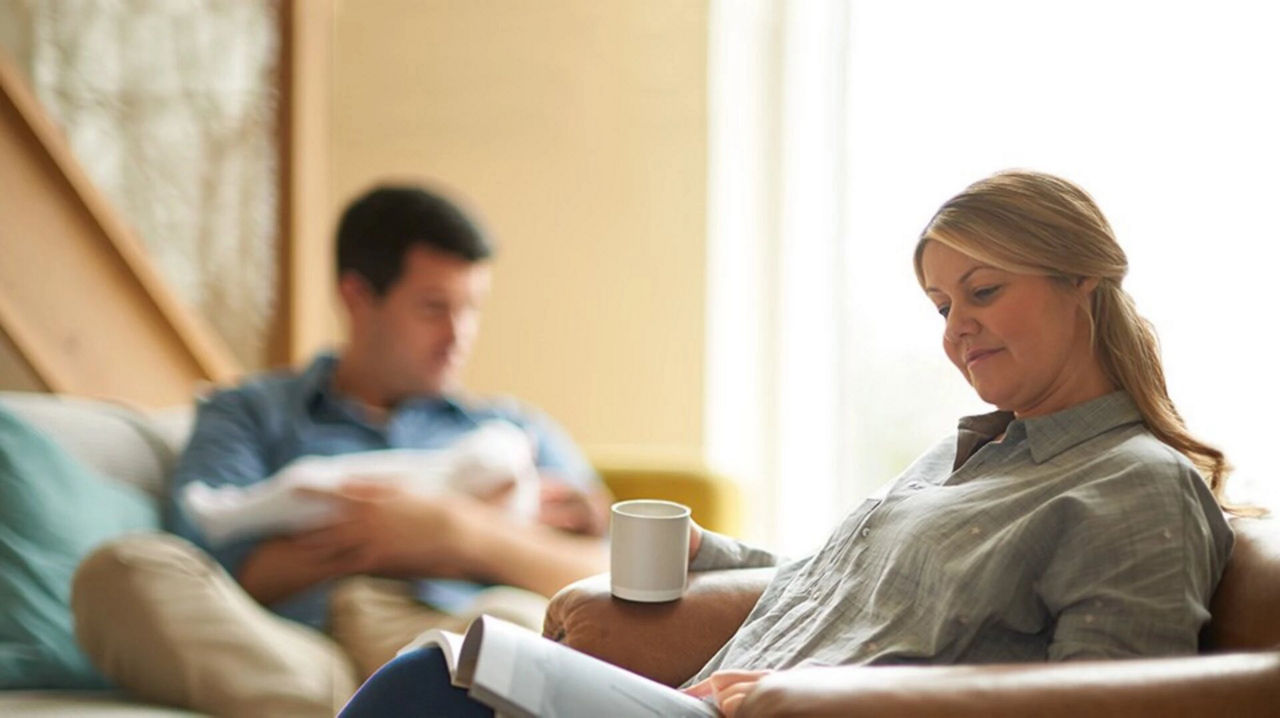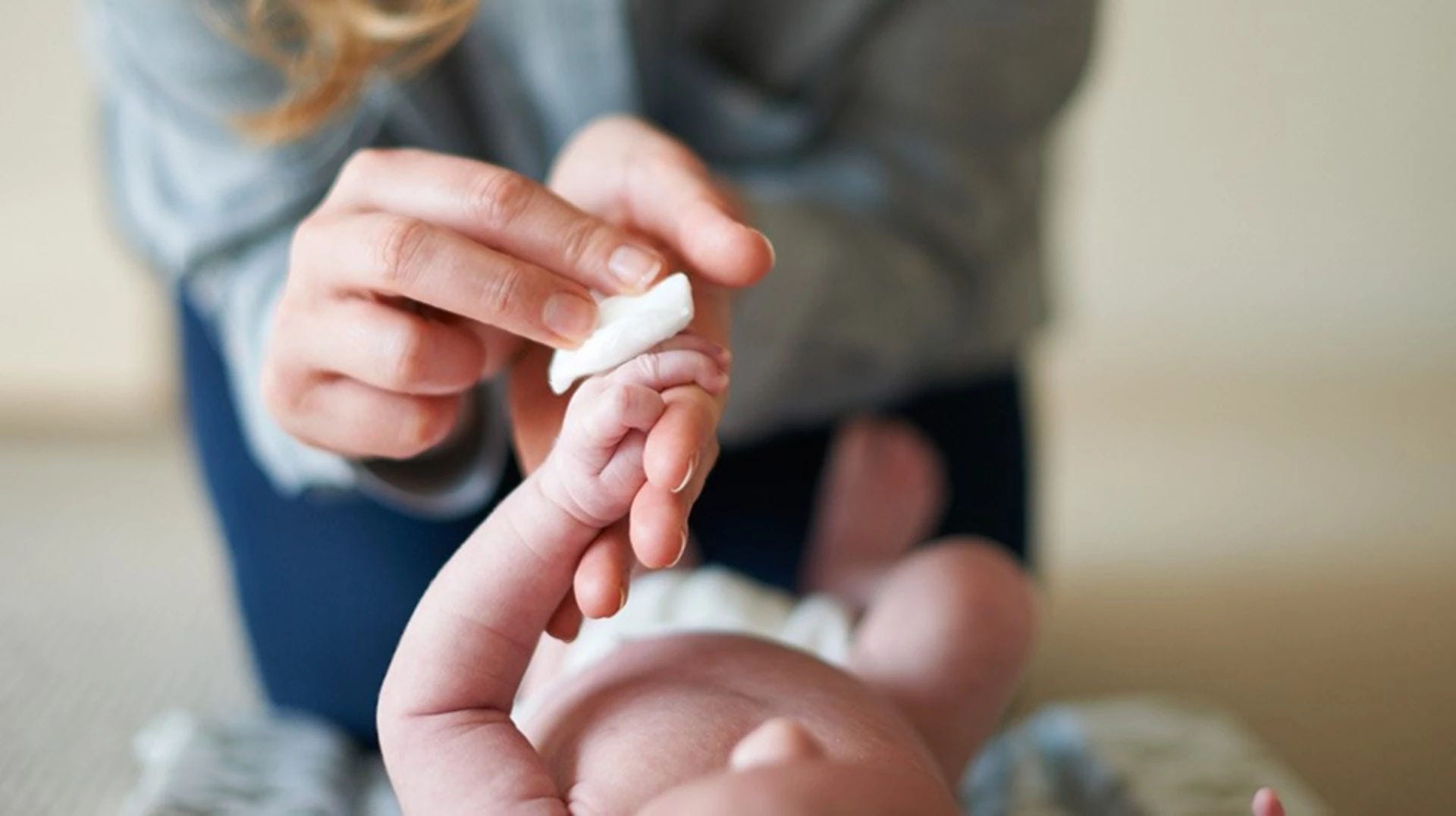Getting out and about with a newborn
Your newborn’s first significant journey will probably be travelling home from the hospital. That’s daunting in itself, but when you first venture out of the house together as a family, a simple walk can feel like quite the adventure.

One step at a time
There’s nothing like a baby to give you a new perspective on the world. Suddenly, everything has changed. Naturally, your instinct to protect your newborn can cause you to worry about the little things. But once you’re able to get out of the house there’s a real joy in seeing the world afresh through your baby’s eyes. Every sight and sound becomes more vivid.
Getting home from hospital
Taking your baby home is a huge milestone and can be a little scary, as you leave the security of having a midwife on hand. If you're travelling home by car you’ll need a car seat – and you’ll need to know how to secure, remove and fasten your baby into it. Take a look at your individual seat instructions and practise fitting and removing it a few times in advance of your due date.
If you’re worried about letting your baby sleep in the car seat it may prove reassuring to sit beside them for this first journey. Rear-facing car seats are a legal requirement for newborns travelling in cars, and hospitals aren’t allowed to discharge you without one. Don’t be surprised when the midwife inspects yours – it’s part of their job.
How to put a newborn in a baby car seat
- Support your baby’s head as you lower them into their seat.
- Bring the straps over the shoulders and align the buckles to fasten with the restraint.
- Double-check that all the buckles are fastened.
- Adjust the straps so that your baby is secure. You should be able to get your fingers comfortably between the straps and your baby’s torso.
- If it's chilly, tuck a blanket around them (after they are strapped in, and over the top of their seatbelt).
- When placing your baby in the car, secure the seat with the seat belt according to manufacturer guidelines or using the inbuilt Isofix base, if your car has one.
- A newborn should always face the rear of the car, preferably in the back seat. Airbags should be disabled for the seat they are in.
Top tips on getting out
It may take a few days or weeks for you to build up to it, but your first trip out of the house with your newborn is bound to be memorable. Here’s our advice:
- Don’t go too far on your first adventure. A stroll around the local park or trip to a quiet café is ideal for a stress-free change of scene.
- Take a partner, relative or friend. You’ll find it reassuring to have some support for your first walk.
- Think about your transport options. For a tiny baby and short trips, a sling or carrier is a practical and soothing option. If you’re going a bit further or want the option to put your baby down to sleep, then a pram or pushchair designed for newborns is ideal.
- Dress for all occasions. You’ll need to make sure that your baby is dressed suitably for the weather, but also bear in mind that British weather is changeable. The temperature also changes when you go inside, so you’ll have to remove layers if necessary to prevent your baby getting too hot. You can’t have too many spare clothes.
- Carry a changing bag with you at all times. This bag will be your constant companion for a while.
- Enjoy the peace. Whichever form of transport you choose, you’ll probably find that fresh air and excitement soon lull your newborn to sleep. Make sure you enjoy this period of relative calm.

The right changing bag will take you all the way through from birth to preschool.
Changing bag essentials
The bag
The right changing bag will take you all the way through from birth to preschool. While any bag will do, look out for handy design features. You want a baby changing bag that’s large enough for plenty of spare clothes and nappies (bearing in mind your baby is going to get a lot bigger) as well as wipes, drinks, snacks, sun lotion and, when they’re older, small toys. But it still needs to be easy enough to carry.
What to look out for
- Plenty of pockets and compartments, including pockets with zips
- Bottle/sippy cup holders
- Portable changing mat
- Removable straps that give you the option to clip the bag onto your buggy
What to pack for your baby
- Travel-friendly changing mat (if not included)
- Plenty of nappies
- Disposable bags
- Fragrance-free baby wipes
- Small tub of barrier cream
- Couple of changes of clothes
- Hat/extra layer, in case the weather changes
- Muslin cloths – these can be used to shield you during breastfeeding, for winding, to mop up mess or even as a sunshade
What to pack for you
- Hand sanitiser for nappy changes
- Bottle of water
- Nursing pads and sanitary towels
Feeding in public
Your baby needs to be fed on demand, and you have an absolute right to meet their needs, wherever you are, without feeling uncomfortable. The Equality Act 2010 means it’s illegal for anyone to ask a breastfeeding woman to leave their premises1. You should also not be asked to move out of people’s view. If you prefer to find a quiet spot, that is up to you. The first time you breastfeed in public may feel a bit strange, but the more you do it, the easier it will be, and the more confident you’ll become. Wearing clothes with buttons on the front will help you to be discreet and you may want to use a scarf or muslin to shield yourself.
Next steps
- Practise putting in the car seat before the baby arrives. Ask your retailer for a demonstration if possible.
- The right changing bag is a good investment; do some research before you buy.
- Careful planning will make your first trip out of the house stress-free and enjoyable.
related articles
Learn more about your baby

Need some help?
You can get quick answers to common questions in our FAQs.
Alternatively, if you need help with general pregnancy or baby advice, or maybe on using or ordering our products - our expert team are always on hand to talk about feeding your baby.
1. NHS UK. Breastfeeding in public [Online]. 2017. Available at: https://www.nhs.uk/conditions/baby/breastfeeding-and-bottle-feeding/breastfeeding/breastfeeding-in-public/ [Accessed March 2017]



